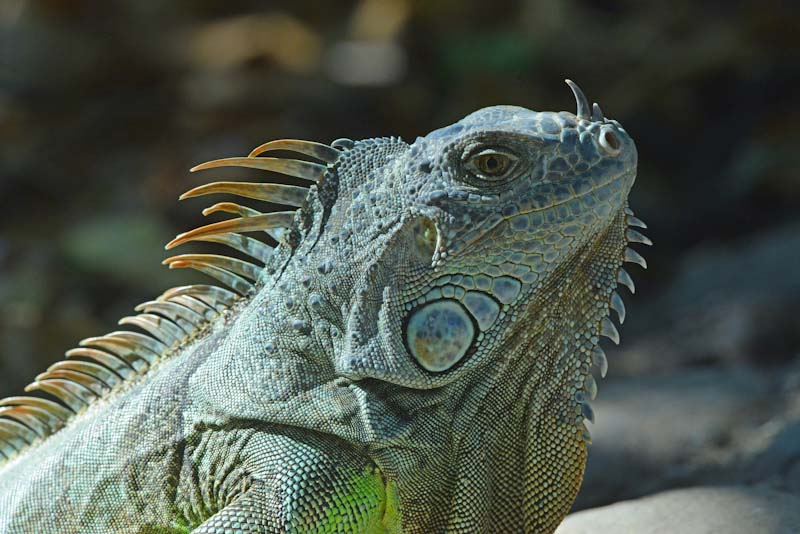

Photo and Commentary ©2023 by Robert Howson
Tuesday, June 13, 2023
For those of us who don’t live in the tropics, iguanas can have a startling appearance. After all, they are pretty big lizards, reaching up to six feet in length, and that row of spines running down their back and tail makes one consider it might be wise to avoid contact. But in truth, both the Green and Black Iguanas are generally peaceful creatures which are largely herbivorous and generally not aggressive at all unless cornered or threatened. Under those circumstances they can use their tail like a lash and their sharp teeth can do serious damage. The Green is more arboreal whereas the Black prefers to spend more time on the ground.
While the powerful tail can also be used to propel them through water, it can as with many other species of lizards, break off to aid in making an escape. But even more interesting is that they possess a third or parietal eye on the top of their head. While incapable of discerning detail, it does serve as a light-sensing organ enabling the iguana to be aware of changes coming from above. Their typical eyes have a limited number of cones which renders their vision rather poor in low light conditions, but the color vision is excellent permitting them to see ultraviolet wavelengths.
Paul also recognized that vision differs from person to person and it was his prayer that they might see all that God had for them. “I ask that your minds may be opened to see his light, so that you will know what is the hope to which he has called you, how rich are the wonderful blessings he promises his people, and how very great is his power at work in us who believe…” (Ephesians 1:18-19 GNT) Rather than wishing for a third eye, perhaps we would be wise to ask for better discernment with the eyes we already have.
